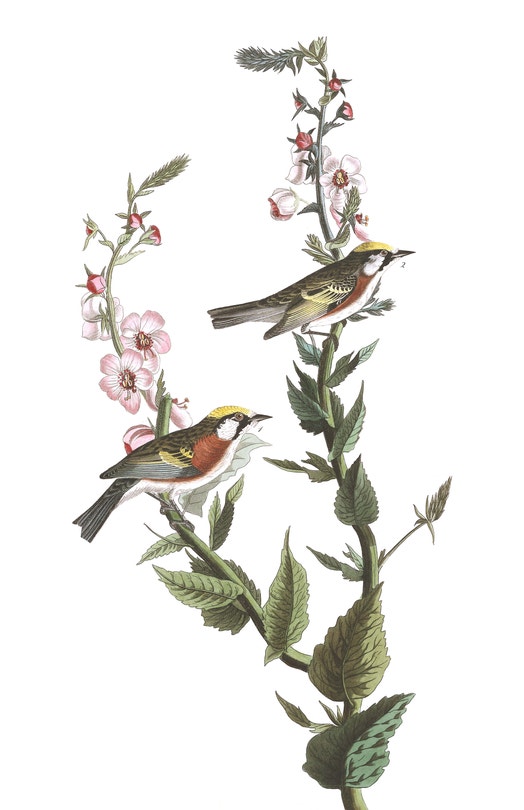June 19.
Sunday. P. M. — To Heywood Meadow and Well Meadow.
In Stow's meadow by railroad, Scirpus Eriophorum, with blackish bracts, not long out.
A flying squirrel's nest and young on Emerson's hatchet path, south of Walden, on hilltop, in a covered hollow in a small old stump at base of a young oak, covered with fallen leaves and a portion of the stump; nest apparently of dry grass. Saw three young run out after the mother and up a slender oak. The young half-grown, very tender-looking and weak-tailed, yet one climbed quite to the top of an oak twenty-five feet high, though feebly. Claws must be very sharp and early developed. The mother rested quite near, on a small projecting stub big as a pipe-stem, curled cross wise on it. Have a more rounded head and snout than our other squirrels. The young in danger of being picked off by hawks.
Find by Baker Rock the (apparently) Carex Muhlenbergii gone to seed, dark-green, as Torrey says. Resembles the stipata.
Blackbirds nest in the small pond there, and generally in similar weedy and bushy pond-holes in woods.
The prevailing sedge of Heywood Meadow by Bartlett Hill-side, that which showed yellow tops in the spring, is the Carex stricta. On this the musquash there commonly makes its stools. A tall slender sedge with conspicuous brown staminate spikes. Also some C. lanuginosa with it. C. canescens, too, grows there, less conspicuous, like the others gone to seed.
Scare up young partridges; size of chickens just hatched, yet they fly. The old one in the woods near makes a chuckling sound just like a red squirrel's bark, also mewing.
Flies rain about my head.
Notice green berries, — blueberries and huckleberries.
Is that red-top, nearly out on railroad bank?
Eriophorum polystachyon of Torrey, Bigelow, and Gray, the apparently broadish-leaved, but Gray makes the wool too long. In Pleasant and Well Meadow; at height.
Carex polytrichoides in fruit and a little in flower, Heywood Meadow in woods and Spanish Meadow Swamp.
Trisetum palustre (?), Well Meadow Head, in wet; apparently at height.
H. D. Thoreau, Journal, June 19, 1859
The young half-grown climbed quite to the top of an oak twenty-five feet high, though feebly. See J
une 23, 1855 ("Hear of flying squirrels now grown.");
March 23, 1855 ("It sprang off from the maple at the height of twenty-eight and a half feet, and struck the ground at the foot of a tree fifty and a half feet distant, measured horizontally.")
The prevailing sedge of Heywood Meadow by Bartlett Hill-side, that which showed yellow tops in the spring, is the Carex stricta. See
April 22, 1859 ("Within a few days I pricked my fingers smartly against the sharp, stiff points of some sedge coming up. At Heywood's meadow, by the railroad, this sedge, rising green and dense with yellow tips above the withered clumps, is very striking, suggesting heat, even a blaze, there.")
Scare up young partridges; size of chickens just hatched, yet they fly. See
June 23, 1854 (" Disturb three different broods of partridges in my walk this afternoon in different places. One in Deep Cut Woods, big as chickens ten days old, went flying in various directions a rod or two into the hillside. Another by Heywood's meadow, the young two and a half inches long only, not long hatched, making a fine peep. Held one in my hand, where it squatted without winking. A third near Well Meadow Field. We are now, then, in the very midst of them. Now leading forth their young broods. ") See also
A Book of Seasons, by Henry Thoreau,
the Partridge.
Notice green berries, — blueberries and huckleberries. See
June 6, 1852 ("The earliest blueberries are now forming as greenberries.”)
Is that red-top, nearly out on railroad bank? See
July 13, 1860 ("First we had the June grass reddish-brown, and the sorrel red, of June; now the red-top red of July.")














